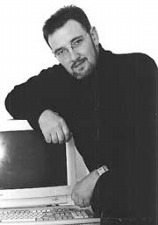The future is now ...
Creating a high tech home like Bill Gates'
By Rick Castellini, MCP
Nationally syndicated computer consultant
special to PRIME
Completed in 1997, Bill Gates' 66,000 square foot home is, as expected, one of the most technologically advanced homes in the world.
At the time, much of the technology in the house was definitely reserved for those on the Forbes 500 list, but today, much of that technology has become available to the masses.
If you are thinking of spring and summer projects, don't overlook the high tech projects in this article as you do your planning.
Your own digital art show
Early on in the construction of Bill Gates' home, much of the talk focused on his 'digital art'. Gates installed many flat panel monitors throughout his home that rotated digital reproductions of art from all eras.
You can do the same for not much money. A good place to start is
www.ceiva.com. The Ceiva company is the most successful digital frame company in the market today. What makes their frame unique is that you can invite people to connect to your frame via the Internet and add pictures to it. The frame then rotates pictures stored in its memory. You can also search the Internet for "digital frame" to find other frames that will rotate your photos but aren't connected to the Internet.
If you are a do-it-yourselfer, then you can do the same thing by purchasing a flat panel monitor and mounting it in or on your wall. Here's an article describing one method of doing this sort of project:
http://tinyurl.com/a6p3n
Creating a home theatre
Another 'oh my gosh' feature in Bill Gate's home was his home theatre. Today, for much less than the cost of a 42" flat panel plasma screen, you can put together a system with a 105" or greater screen. All you need is a LCD or DLP projector (they are not just for PowerPoint presentations anymore), a screen (retractable or permanently mounted on wall), and a good AudioVideo Receiver and DVD player. My friend uses a $700 Epson projector and an $80 screen he mounted on his ceiling to watch movies on the 'big screen' every weekend. When we added on a rec room to our house last year, I mounted a projector on the ceiling, a 105" screen on the wall and wired in the wall speakers for my sound system.
You can learn more about this awesome technology at projectorpeople.com. Make sure to visit their customer showcase section where people send in pictures of their home theatres. This project is a fun do-it-yourself type project for sure. Remember, home theatre isn't just for movies; it's great for watching sports or even your favorite sitcom or TV drama. I wrote about this topic a little in last month's CES report, but I want to make sure that you know about cheaper, potentially better options than plasma and LCD TVs.
Saving energy the tech way
Bill Gates splurged a little for some luxuries, but he also spent some time thinking about how to save some energy in his dream home as well. Technology can save you money and make living in your home more comfortable and safer, too. First, start by replacing regular thermostats with the many programmable thermostats available at your local hardware store. According to some sources, you can save up to 25% on your annual heating and cooling bills with these gadgets.
A simple, but yet underutilized technology is the fluorescent light bulb. You can find them in all shapes and sizes in your hardware store and they will pay big dividends in savings over traditional light bulbs. I also like the light they give off a little better than incandescent bulbs. Also, think about light tubes. Light tubes are quick installing sky lights that don't leak and don't cause any heat gain or loss; yet provide significant natural light to a room. One example can be found at
www.solatube.com.
Your high-tech castle
I hope I inspired you to think about making your home a little more comfortable and efficient by putting into practice some of the technologies that Bill Gates used in his mansion. Not all technology has to be expensive or impractical. In fact, these ideas can save you money and make your home into your own mansion.
Rick Castellini is an author, computer consultant, and hosts a nationally syndicated computer radio show. Visit his web site at www.HelpMeRick.com for new tips every week and sign up for his free weekly email newsletter.
